Although formal diplomatic relations between the governments of newly independent Sri Lanka (then Ceylon) and the United States of America was established in 1948, contacts between the peoples of the U.S.A and Sri Lanka are over 200 years old .
In 1789, the year that the USA adopted its Constitution, New England sailors first anchored in the harbours of Sri Lanka. From ancient times Sri Lanka enjoyed commercial relations with distant foreign countries and empires such as Greece and Rome, Arabia and China. As the Orient and the Occident began mingling with each other, sheltered ports of Sri Lanka like Galle was no less frequented by the merchant seamen of America.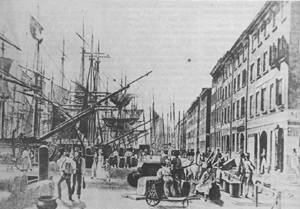
The earlist known American visitors to Ceylon were
whaling and merchant ships from New England.
An excerpt from a log of
August 31st, 1789
The next American visitors in the early part of the 19th century came not in search of trade but of souls. As early as 1813, Rev. Samuel Newell, a New England clergyman, who later worked and died in India, spent some months laboring in missionary activity in Sri Lanka. He was, in a sense, a forerunner of the American missionaries who came to the Jaffna Peninsula to preach the words of Christ. With enormous self-sacrifice, these missionary families spread knowledge of the Bible; but in a uniquely American way also sought practical benefits for the people they proselytized and served.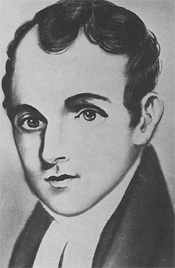
Rev. Samuel Newel
The early missionaries, like the Rev. Edward Warren, who arrived in July 1816, took special interest in educating the people of the area in both English and their own Tamil language. Since education had been such an important factor in the rapid development of the United States, the missionaries hoped that founding schools throughout the peninsula would help to bring about the much needed social reforms, the elimination of poverty, and overall improvement in the lives of the people. From the opening of the first American missionary school in Tellipalai in 1816, through 1848, one hundred and five Tamil schools and 16 English schools were founded. In 1823, the Americans founded Batticota Seminary at Vaddukoddai with Rev. Dr. Daniel Poor as its first principal.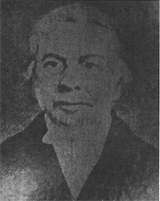
Rev. Dr. Daniel Poor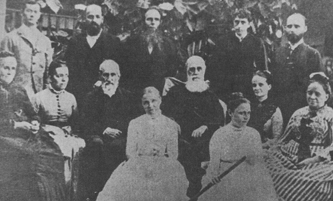
Group photograph of American missionaries resident in
Jaffna in 1890.
These hardworking New Englanders also took many important steps to provide educational opportunities for women, quite a radical concept at that time. Mrs. Harriet Winslow, a great-great-grandmother of the late Secretary of State John Foster Dulles, founded the Uduvil Girls’ School in 1824. It was the first girls’ boarding school in Asia. The American Mission started the first printing press in the north in 1820 and in 1841 the island’s second oldest newspaper, the Morning Star. In 1862, Rev. Miron Winslow published the first Comprehensive Tamil- English Dictionary. Medical missionaries translated textbooks into Tamil. One such missionary, Dr. Samuel Fisk Green, began a thirty-year medical practice and training programme in 1847 and translated more than 400 pages of medical texts into the language of his students.
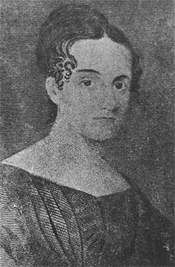 |
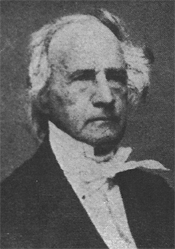 |
| Mrs. Harriet Wadsworth Lathrop Winslow, founder and the first principal of the Uduvil Girls’ School (1824) in Jaffna, the first girls’ boarding school in Asia. |
Rev. Miron Winslow, Tamil scholar and compiler of “Comprehensive English Tamil Dictionary” |
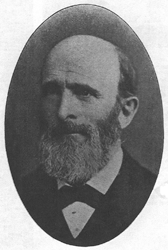
Dr. Samuel Fisk Green, medical missionary and author of medical and science books in Tamil.
The last years of the 19th century saw another remarkable American come to Sri Lanka, a man who came not to convert but to learn; Buddhist Theosophist the dedicated Colonel Henry Steel Olcott. Col. Olcott is remembered with love and gratitude by the Sinhalese Buddhists of Sri Lanka, since he reawakened the nation and inspired them to struggle for their legitimate rights, at a time they faced considerable discrimination in education, government employment and access to professional activity, under British colonial rule.
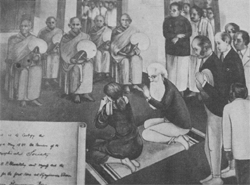
Temple fresco shows Colonel Olcott
observing pansil.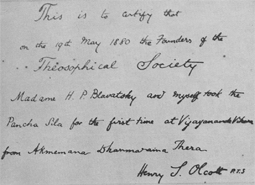
Facsimile of the statement by Olcott of his
becoming a Buddhist.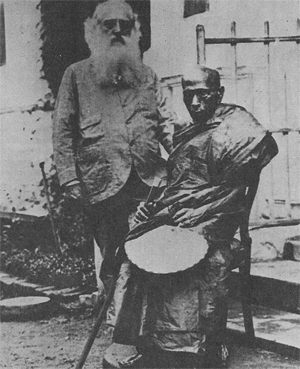
Colonel Olcott wih Ven. Hikkaduwe Sri Sumangala
Nayaka Thero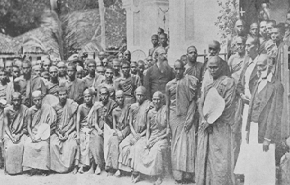
Colonel Olcott with a group of Buddhist monks
at Vidyodaya Privena.
Assisting Sri Lankans to restore Buddhism to its pristine glory, he drafted and published, in consultation with the Buddhist clergy, a Buddhist catechism. To provide Buddhism with a unifying symbol, he designed a Buddhist flag to incorporate the six colors of the aura, which, according to tradition, surrounds any place where the Buddha walked. He campaigned to have “Wesak”, the day which commemorates the Birth, Enlightenment and Death of Lord Buddha, recognized as a public holiday. He was instrumental in starting Buddhist educational institutions such as Ananda College in Colombo in 1886 and preached throughout the island and worked successfully to achieve official recognition for Buddhist education. Subsequently Colonel Olcott also founded Mahinda College in Galle and Dharmaraja College in Kandy while supporting founding of Museus College. These schools taught the nation’s children to value their civilization and culture.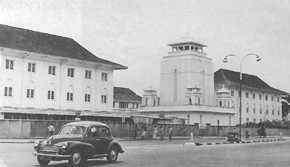
Ananda College, premier Buddhist educational
institution founded by Colonel Olcott.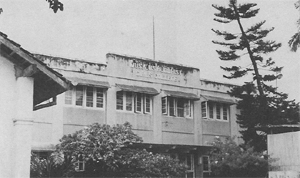
Colonal Olcott supported Peter de Abrew and
Museus Higgins in founding Museus College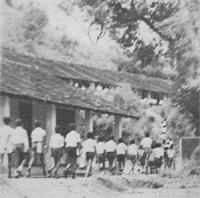
Dharmaraja College, one of the
leading schools founded by
Colonel Olcott.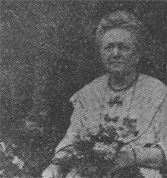
Mrs. Marie Museus Higgins,
co-founder Museus College
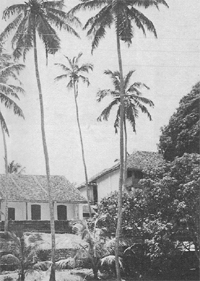
Mahinda College, Galle.
Throughout his life Colonel Olcott traveled extensively to bring Theravada Buddhism and Mahayana Buddhism closer together. By petitioning the British authorities in London, he regained “Wesak” as a legal holiday and guaranteed the registration of Buddhist weddings under the colonial administration. He also founded other schools, laid the foundation for a national system of education, and paved the way for the national movement which succeeded in its struggle for legitimate rights for the majority Sinhalese Buddhists, who were hitherto marginalized. This paved the way for the revival of a national movement which succeeded in its struggle for independence more than a half century later. National leaders like Anagarika Dharmapala, tutored by Olcott, were the catalyst of this political reawakening. The religious devotion of Colonel Olcott and his energetic dedication to a Buddhist renaissance served as the inspiration for the Anagarika Dharmapala who became one of Sri Lanka’s greatest national reformers and a peerless missionary for Buddhism throughout the world.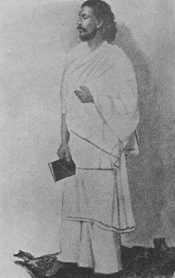
Anagarika Dharmapala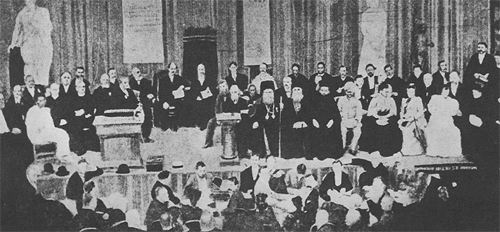
At the Parliament of Religions in Chicago (1893), Anagarika Dharmapala is seated in
white on the left.
When Henry Steel Olcott died, his sandalwood pyre was covered with the American flag and also with the Buddhist flag he designed, which even today is flown during Buddhist festivals. A statue of Col. Olcott stands opposite the Colombo Fort railway station, at the head of a street named after him, while another statue of his, has been erected in Galle.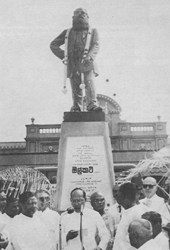
Unveiling of Col. Olcott statue
opposite Fort Railway Station,
Colombo
As Colonel Olcott came to Sri Lanka from the United States to become a giant among men in Buddhist circles, yet another remarkable man,
Dr Ananda Coomaraswamy, went from Sri Lanka to the United States to become one of the world’s leading Oriental scholars and left a rich intellectual legacy to the world. Named the Curator of the Boston Museum of Fine Arts in 1917, Dr. Coomaraswamy was not content merely to interpret his native Sri Lanka and Asia for the West, but also used his scholarly gifts to create closer understanding between the two cultures. This great Ceylonese scholar and writer, as curator at the Boston Museum of Fine Arts, led the American people to an appreciation of both the art and the philosophy of the East. He was the author of over 500 works, and Dr. Coomaraswamy’s wife said of him: “The extraordinary production in art history, esthetic theory, social criticism, comparative religion, symbolism and metaphysics of this man is astounding. He had intellectual powers with which few men of his generation could compare.”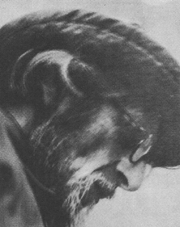
Dr Ananda Coomaraswamy
Mark Twain author of the Adventure of Tom Sawyer (1876) and Huckleberry Finn (1884), had aslo visited Ceylon in 1896.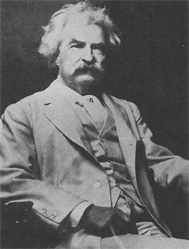
Mark Twain
Trade between the two countries had developed early in the 19th century. Incredible as it may seem, ice from New England ponds was used to chill beverages in Colombo in the era of sailing ships, before the American Civil War. Sri Lankan graphite was used in that war but it also found its way to an American named Joseph Dixon and through Mr. Dixon’s ingenuity, to the “lead” pencils in the hands of millions of American school children. New England ice and Sri Lankan graphite, just as Thomas clocks and Singer sewing machines, played their part in the development of both nations.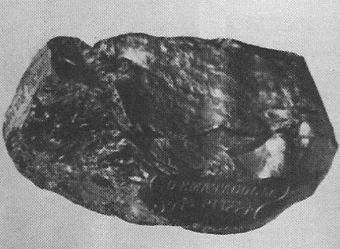
This 480-pound example of Sri Lanka graphite is from the
Dematagolla Pit of the Jacob De Mel mines. It is now on
display at the American Museum of Natural History in
New York.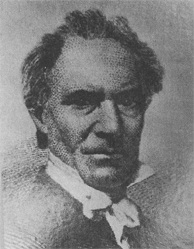
Joseph Dixon, popularizer of the
modern “lead” pencil, came to
Ceylon in 1838 to arrange for export
of graphite from the H.L. De Mel Co.
mines. The first Ceylon graphite,
which Mr. Dixon had used since
1829, came to America as ballast in
the early sailing vessels returning
to New England from Ceylon.
The U.S. Navy’s “Great White fleet” visited Ceylon during its famous cruise around the world in 1908.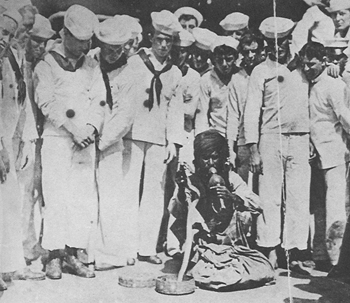
While missionaries, merchants and other individual Americans left their mark on Sri Lanka in the 19th century, consular and commercial relations between the US and the then British Colony prospered. [A U.S. consular presence had been on the island since 1850] In 1850, John Black, a Scottish merchant resident in Galle, was named the first American Commercial Agent in Ceylon. The American Commercial Agency was to move to Colombo in 1870 and later became the American Consulate in British Ceylon.
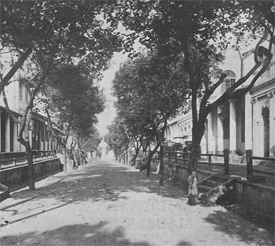
American Consulate office (1885) in Chatham Street
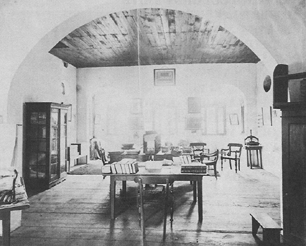
Interior view of the American Consulate office (1885)
The people to people interaction between the two countries, each proud of their respective histories as representative democracies was to grow with Sri Lanka attaining independence in 1948 and has evolved through the years expanding on the basis of many common values.
Acknowledgements;
Two Centuries of Sri Lanka-American Friendship – A Pictorial Record by U.S. Information Service, Colombo – 1978.
The Emerging Importance of Sri Lanka After 50 Years of Independence by Center for Strategic and International Studies in Washington DC – 1998.
Golden Jubilee Commemorative Volume on Sri Lanka – US Relations by Embassy of Sri Lanka in Washington DC – 1998.







